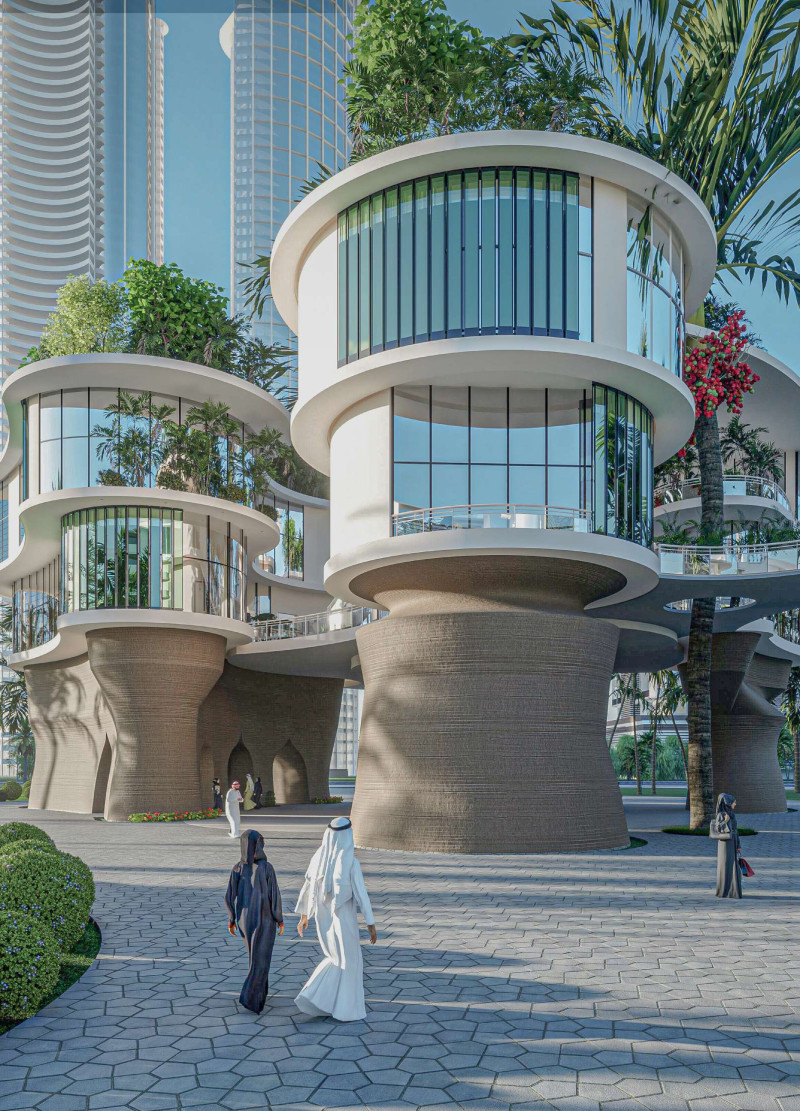5 key facts about this project
The overall design is characterized by a clear but flexible spatial organization, allowing for an adaptable response to various user requirements. The building is planned to accommodate public gatherings, recreational activities, and private events, embodying the concept of mixed-use spaces. This functionality is mirrored in the architectural design, which emphasizes open areas that facilitate interaction while maintaining distinct zones for different uses.
Particular attention was given to the building's relationship with its site and context. By carefully analyzing topography, light, and prevailing winds, the design maximizes natural light and ventilation, enhancing the indoor environment. The strategic placement of windows and openings creates a dynamic interaction between the interior spaces and the surrounding landscape. This approach not only contributes to the energy efficiency of the project but also provides a connection to nature, which is an important consideration in modern architectural design.
The material palette reflects a commitment to durability and sustainability. The use of reinforced concrete provides a solid foundation, while sustainably sourced timber adds warmth and texture to the interiors. The façade features a combination of glass and natural stone cladding, creating a visual dialogue that contrasts the sleekness of modern materials with the timelessness of traditional ones. This choice reflects a broader architectural trend that seeks to balance contemporary aesthetics with local heritage.
Unique design approaches are evident throughout the project, particularly in the use of adaptable spaces. Folding walls and movable partitions allow areas to be reconfigured based on the needs of the users. This flexibility ensures the building remains relevant over time as community needs evolve. Additionally, the inclusion of green roofs and integrated landscaping enhances not only the aesthetic value but also contributes to urban biodiversity and improved air quality.
Lighting plays a critical role in the architectural experience. Thoughtfully designed fixtures highlight key features throughout the building while ensuring functionality. Natural light is prioritized, with skylights and large windows providing illumination during the day and creating an inviting ambiance.
The architectural details include custom joinery and a focus on craftsmanship, underlining the intention to create an inviting atmosphere. The balance between open spaces and cozy nooks invites users to explore and engage with their surroundings. The layout is designed to facilitate movement, ensuring that users can navigate the space intuitively.
As a whole, this architectural project serves not merely as a building but as a facilitator of community interaction and cultural exchange. The careful consideration of materiality, spatial organization, and environmental context demonstrates a clear understanding of contemporary architectural practices. This project is a testament to how thoughtful design can create spaces that are not only functional but also resonate with users on multiple levels.
For those interested in a deeper understanding of the project, including architectural plans, sections, and design details, further exploration of its presentation is encouraged. The unique aspects of this architecture invite an engaging dialogue about modern design principles and their application in creating spaces that enhance everyday life.


























